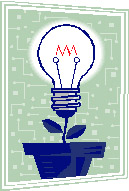 International Lighting in Controlled EnvironmentsWorkshop
International Lighting in Controlled EnvironmentsWorkshop
Compiled and edited by
T.W. Tibbitts, Chairman
University of Wisconsin
Tibbitts, T.W. (ed.). 1995. International lighting in controlled environments workshop proceedings. 393-pp. NASA Conference Publication CP-3309, Kennedy Space Center, FL.
PREFACE
Lighting is a central and critical aspect of control in environmental research for plant research and is gaining recognition as a significant factor to control carefully for animal and human research. Thus this workshop was convened to reevaluate the technology that is available today and to work toward developing guidelines for the most effective use of lighting in controlled environments with emphasis on lighting for plants but also to initiate interest in the development of improved guidelines for human and animal research.
For plant research, the ultimate requirement has been to provide lighting that mimics sunlight both in intensity and in spectral balance. In the early part of this century, tungsten lamps were tried, then in the 1950’s fluorescent lamps, followed by xenon lamps, and more recently high intensity discharge lamps. However research with all of these lamp systems has been plagued with problems with unbalanced spectrum and/or excessive amounts of infra-red energy. As a result most research has been undertaken with light levels that have not simulated sunlight either in intensity or spectrum. With the ongoing concern over global climate change, a renewed interest in duplicating sunlight has surfaced for there is a general recognition that simulation of sunlight is needed for controlled environment research in order to quantify the impact of climate changes on our natural environment. Also NASA is promoting the use of plants in bioregenerative life support systems for long term space bases and needs to optimize the use of lamp lighting for efficient production in these systems.
There are no generally accepted guidelines for plant scientists for lighting intensity or for the required light spectrum for growth of plants. This is partly because requirements differ for different species of plants but principally this has resulted because of the lack of definitive data on plant response to light and also varying opinions by different scientists on what is needed by plants. Yet guidelines are needed. These guidelines are needed to provide direction for manufacturers in the construction of controlled environment facilities and to provide information for cost-effective requests by scientists planning new acquisitions and upgrading existing facilities.
There are a number of established guidelines for lighting in human and animal environments. Development of new lighting guidelines is necessary for three reasons: 1) recent scientific discoveries show that in addition to supporting the sensation of vision, light has profound non-visual biological and behavioral effects in both animals and humans, 2) federal regulations (EPACT 1992) are requiring all indoor environments to become more energy efficient with a specific emphasis on energy conservation in lighting, 3) lighting engineers and manufacturers have developed a wealth of new light sources and lighting products that can be applied in animal and human environments.
The workshop was aimed at bringing together plant scientists and physical scientists to interact in the discussions. It involved participation of biological scientists involved in studying mechanisms of light reactions and those involved in utilizing lighting for production of plants and maintenance of animals in controlled environments. It included participation of physical scientists from universities and government involved in research as well as those from industry involved in producing lamps and in construction of controlled growth facilities.
The specific objectives addressed at the workshop were:
- in-depth examination of the spectral and intensity requirements for the primary responses in plants that are controlled by light and exploration of the requirements for animals and humans.
- . discussion of the new technologies in lamps that could have usefulness for controlled environment lighting.
- review of the available and new technologies for distribution of light and control of excess infra-red radiation.
- discussion of guidelines for lighting of plants in controlled environments and lighting for animals and humans.
Specialists from universities, government, and industry were invited to make formal presentations and help lead workshop discussions. The meeting was open to the scientific community and 152 individuals were registered for the workshop. All attendees were encouraged to participate in the discussions.
These formal presentations are published in the proceedings along with contributions as Short Reports that were prepared by some participants following the workshop.
Draft guidelines, as developed by the organizing committee are included as a final chapter in the Proceedings.
Organizing Committee
Ted Tibbitts, University of Wisconsin, Madison, WI. (Chairman)
Gerald Deitzer, University of Maryland, College Park, MD.
Robert Langhans, Cornell University, Ithaca, NY.
John Sager, JFK Space Center, JFK, FL.
Art Spomer, University of Illinois, Urbana, IL.
George Brainard, Jefferson Medical College, Philadelphia, PA
Funding Support
U.S. Department of Agriculture Controlled Environments Inc
Agricultural Experiment Stations Environmental Growth Chambers
National Aeronautics Space Administration Percival Scientific Inc.
National Science Foundation
Department of Energy
Wisconsin Center for Demand Side Research
Sponsoring Agencies
American Society of Agricultural Engineers
American Society of Horticultural Science
American Society of Photobiology
American Society of Plant Physiology
International Lighting Commission (CIE)
Lighting Research Institute
List of Participants (click here)